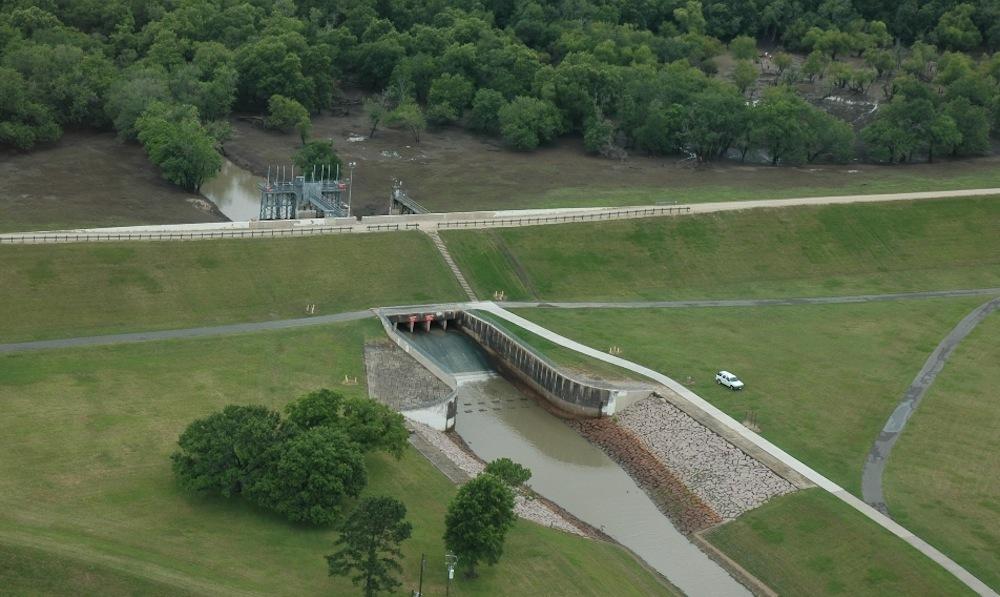
For thousands of homes and businesses surrounding the Addicks and Barker reservoirs, Hurricane Harvey’s rainfall caused massive amounts of flood damage. Both properties upstream of the reservoirs and downstream of the reservoirs suffered catastrophic flooding, but with very different causes. A recent court order for the Addicks and Barker reservoir litigation has recognized there are two very distinct claims being made by property owners.
Upstream Reservoir Flooding Claims
When the Addicks and Barker reservoirs were constructed, the U.S. Army Corps of Engineers created flood pools around the reservoirs. These flood pools would spend most of their time completely dry, but would hold water in the event of major rainfall. Because land inside these flood pools would occasionally be flooded, in the 1940s the U.S. government began purchasing land inside the flood pools.
By owning the land, the government sought to prevent unsuspecting property owners from future flooding. Unfortunately, the government didn’t purchase all of the land inside the flood pools. The Addicks reservoir flood pool consists of land up to 115 feet in elevation, but the government only purchased land up to 103.2 feet in elevation. The Barker reservoir flood pool is made up of land up to 106 feet, but the government only purchased land up to 95 feet.
Land between 103.2 feet and 115 feet in elevation in the Addicks reservoir and between 95.5 feet and 106 feet in elevation in the Barker reservoir was left available to developers, who built and sold thousands of properties. People who purchased properties within this flood pool elevation were not warned they were subject to inundation; and because of this, most of them didn’t purchase flood insurance.
Unfortunately, the full reservoir lands within Addicks and Barker reservoirs were needed during the rainfall brought by Hurricane Harvey. It was only after their properties were destroyed by floodwaters that property owners learned their properties were located inside the flood pools.
Compensation For Upstream Claims
The U.S. Army Corps of Engineers purposefully flooded the reservoir areas during and after the storm. The water level in the Addicks reservoir reached 109.1 feet during Hurricane Harvey and the level in the Barker reservoir reached 101.5 feet. This means the floodwaters stored in the Addicks and Barker reservoirs exceeded the boundaries of the property owned by the government. Property owners within these elevations did not consent to the use of their property for storing floodwaters.
Rebuilding properties will require a significant financial investment. Property owners looking to sell or transfer their property will likely suffer a massive economic loss due to decreased demand in the area and the diminished value of their property,. Allowing floodwaters to be stored above its own designated property boundaries constitutes a taking of private property by the government for public use. Under the Fifth Amendment, property owners must be fairly compensated for the taking of their property. Property owners upstream of the reservoirs are pursuing fair compensation from the government.
Downstream Reservoir Claims
In 1935, the U.S. Army Corps of Engineers began construction on the Addicks and Barker reservoirs. These reservoirs were designed to protect Houston from widespread flooding. Unfortunately, by 2009, the dams were deemed to be in “extremely high risk of catastrophic failure.” The U.S. Army Corps of Engineers began a $75 million renovation project and was in the middle of renovations when Hurricane Harvey hit in late August.
Ordinarily, the dams on the Addicks and Barker reservoirs are left open, allowing water to flow through. However, during heavy rainfall, the dams are closed and the rainwater pools in the reservoirs. This prevents heavy rainfall from inundating downtown Houston. When Hurricane Harvey brought unprecedented rainfall to the Houston area, the dams were initially closed to prevent flooding.
However, after several days of heavy rainfall, the U.S. Army Corps of Engineers grew concerned that the pressure put on the dams by the increased rainfall was too great. They then made the decision to open the floodgates via controlled releases to prevent a total failure of the dams. As a consequence, thousands of properties downstream of the dams were flooded.
Compensation for Downstream Claims
When the U.S. Army Corps of Engineers made the decision to open the dams, they did so knowing it would cause widespread flooding. By allowing floodwaters to flood properties immediately downstream of the dams, the U.S. Army Corps of Engineers seized private property for public use. When the government takes private property for public use without fairly compensating property owners, it is called inverse condemnation. Property owners downstream of the reservoirs are pursuing compensation from the government for the taking of their property for public use.
Houston Reservoir Lawyers
Upstream and downstream reservoir claims are very different, but the experienced lawyers at Raizner Slania LLP are working with property owners on both types of cases. Our lawyers understand the unique legal complexities of each type of claim and are fighting hard for clients to help them rebuild. If your property was flooded either downstream or upstream of the Addicks and Barker reservoirs, call us immediately to learn your legal options.


